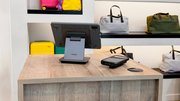Technology
5 things retailers can do to stay competitive in the ever-changing world of retail
Maria Topken, vice president, client leadership, at Brandience, shares five strategic steps retailers should take to stay competitive and why retailers should be a fast follower rather than a first mover.

May 21, 2020 by Maria Topken
Growing up, a shopping trip to the mall was a much-anticipated event! It meant hanging out with friends, trying on the latest fashions, and eating at the food court. But well before COVID- 19 reared its ugly head, shopping trends changed and much of that had to do with consumers' need to connect with brands, purchase products that have been personalized for us, and the ability to get our purchases quickly and conveniently. Navigating the new and ever-changing customer journey is key for brands to stay on the road to success.
What's a retailer to do to stay on top?
• Do consumer research on your customers. Ask them not only about how you are performing, but about features that would make them buy more from you.
• Create a customer advisory board with the goal of getting actionable input. Remember, these should not be sales presentations!
• Stay on top of trends within your industry. Do a deep dive on your direct and indirect competitors.
• Test and learn to unlock data-driven innovation. Use this data to experiment on hypotheses so you can measure and understand the KPIs around those hypotheses to drive future decisions.
• Should you become a First Mover or a Fast Follower? While the First Mover could have the competitive edge, the Fast Follower learns from the First Mover's mistakes and improves upon innovation.
So, what are some of the trends and new innovations that retailers are trying? How are they contributing to a new customer journey?
Experiencing the brand on a deeper level
For a brand to survive, customer experience is the key. For example, Lululemon not only sells trendy yoga gear, the stores offer free yoga classes as well. Joann Fabric & Craft Stores opened its first "Creator's Studio" concept store in 2018. It featured cutting-edge technology, dedicated community and learning spaces, and new custom services. The chain has since successfully rolled out several more of these stores nationwide.
Amazon Go and Amazon Go Grocery are traditional brick-and-mortar stores that provide “just-walk-out- shopping,” which automatically detects when products are taken from or returned to the shelves and keeps track of them in a virtual cart. When you're finished shopping, you simply leave the store. Later, Amazon charges your Amazon account and sends a receipt.
Augmented Reality and artificial intelligence: influencing product personalization
Trying before you buy helps you to feel confident about your purchase. No one wants buyer's remorse and augmented reality is helping that become a thing of the past.
Some examples:
• Warby Parker's Virtual Try-On app overlays computer-generated glasses onto the customer's face.
• Sephora not only offers beauty classes, it also has an app that allows you to virtually "try on" palettes, products and looks.
• Ikea Place and Pottery Barn's AR apps allow customers to outfit a room virtually — making sure all pieces fit before the purchase.
• Sherwin-Williams' ColorSnap Visualizer mobile app lets you see how a particular color paint looks on your wall.
• Stitch Fix, an e-commerce brand, uses a blend of stylists and artificial intelligence to help determine the customer's preferred style to fit his or her budget and lifestyle.
McDonald's is even getting in the AI game, installing digital menu boards in its drive-thru lanes. These boards promote products based on the time of day, weather, popularity of certain menu items and even the length of the wait.
Delivery technology – not all purchases are made within its four walls
Buy online, pick-up in store is a trend that took off during the past holiday season. The benefits for the customer are they can shop from their couch, incur little or no delivery fees, and have the knowledge that their package won't succumb to “porch pirates.” Stores win because in many instances, the customer rings up additional items when picking up their packages.
The traditional customer journey is changing, and retailers need to continue to reinvent themselves to stay connected with their customers' ever-changing wants and needs. To come out as a leader, the brand's focus must be much more than just selling product.
Maria Topken is vice president, client leadership, at Brandience.





